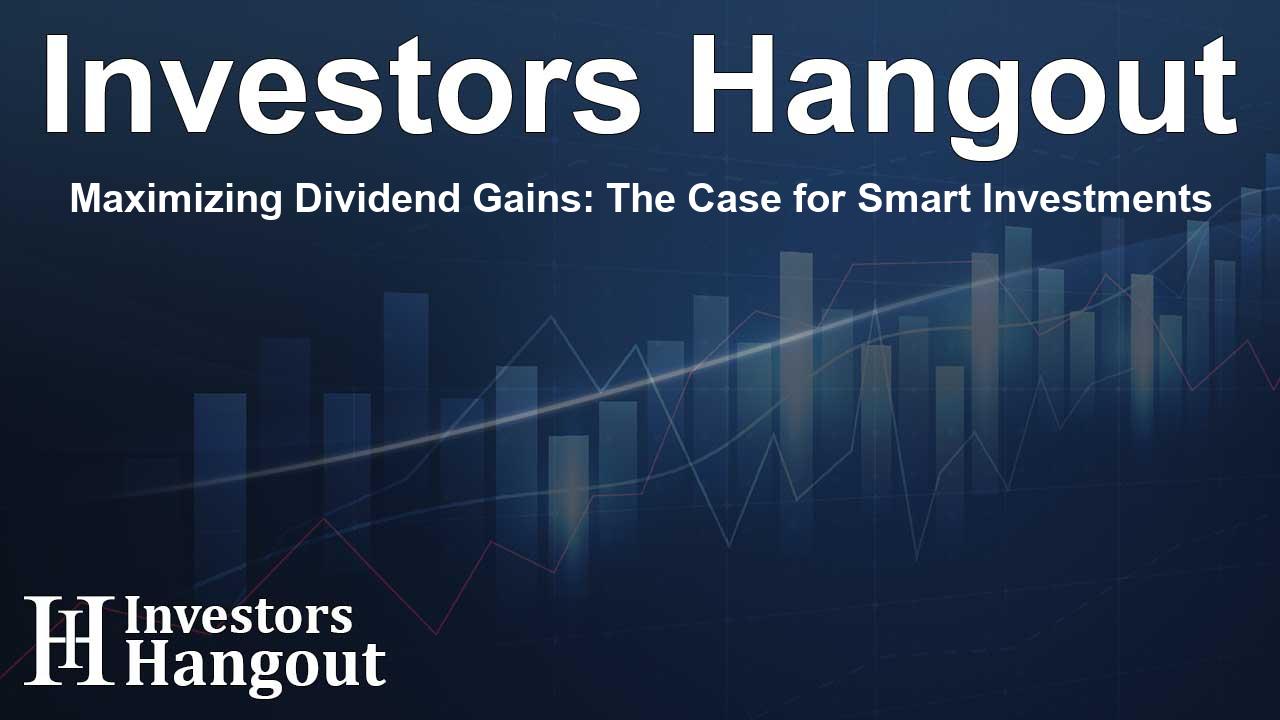Maximizing Dividend Gains: The Case for Smart Investments

The Intriguing World of Dividend Investments
The stock market continues to show resilience, showcasing a variety of opportunities for dividend investors. However, with this potential comes the necessity for careful selection. Today, we will analyze two closed-end funds (CEFs) that not only share a similar portfolio but also offer comparable dividend payouts. Despite these similarities, one is currently an excellent buying opportunity, while the other appears overpriced and should be approached with caution.
A Look at Current Market Trends
First, let’s discuss the recent performance of major stock indices. Generally, the S&P 500 has been known to yield around 10% annually. Interestingly, the index has already approached this average remarkably early in the year, suggesting a strong market momentum. This unusual speed up presents an intriguing scenario—will the market maintain this upward trajectory?
According to market sentiment indicators, such as the Fear and Greed Index, there has been moderation in investor enthusiasm. While the market is currently in a 'greed' phase, signs suggest potential volatility could be on the horizon. Investors should remain cautious as shifting sentiments can lead to market corrections.
Additionally, the landscape continues to showcase resilient earnings reports from companies, driven by productivity gains from technological advancements. Despite anticipated warnings from various financial analysts, many companies have consistently outperformed their earnings expectations, which could suggest healthier market dynamics than initially forecasted.
Evaluating Valuations: The Importance of Caution
With an overall optimistic outlook on the market, it’s crucial to recognize that current valuations may not reflect the same promise. The S&P 500 now holds a price-to-earnings ratio of approximately 25.9, a figure significantly higher than what has been typical over the years. This elevated level of valuation raises concerns, reminiscent of previous market bubbles.
Contrary to what certain media outlets advise, now is not the time to panic-sell; instead, strategically assessing your anchor and repositioning while maintaining dividend streams is vital. Investors should avoid assets that are considerably overvalued and consider rebalancing their portfolios to mitigate risks and secure gains.
An In-Depth Look at the Gabelli Equity Trust
Taking a closer look at the Gabelli Equity Trust (NYSE: GAB), we can see it presents itself as a lucrative player, boasting a generous 10.1% dividend yield. Despite achieving impressive returns—17.7% as of recent reports—there are indications that the market price may be diverging from its net asset value (NAV), suggesting a potential overvaluation.
GAB’s performance illustrates an essential scenario seen in many closed-end funds, where market price surges prompt a premium that may not be sustainable. Currently, GAB trades at a 6.6% premium to its NAV—a significant shift from its previous discount territory.
Exploring Profit-Taking Opportunities
Now may be the ideal moment for investors to consider taking profits with GAB. As it transitions from a traditionally discounted situation to a premium, it could be wise to sell. For those seeking a more reasonably priced alternative, the Adams Diversified Equity Fund (NYSE: ADX) offers similar holdings with a compelling valuation. ADX typically trades at around an 8% discount to NAV, allowing investors to gain a more favorable entry point.
This discount gives ADX an attractive edge, particularly considering its regular dividend disbursements and long-term performance. ADX’s commitment to returning a steady stream of income combined with favorable historical returns presents an appealing case against the pricier GAB.
A Long-Term Perspective on Performance
When we evaluate the long-term trajectories of these funds, the distinctions become even clearer. Over the past decade, ADX has posted an impressive 323% return—significantly outperforming GAB’s 176%. This performance is noteworthy, especially given ADX’s long-standing operational history, tracing back to the 1920s.
In essence, this creates a unique situation: while GAB enjoys short-term hype, ADX remains a sound investment based on historical performance and valuation. This mispricing phenomena is not uncommon in closed-end funds and presents a prime opportunity for investors willing to adopt a patient strategy of buying lower-valued assets while selling those that show inflated prices.
Frequently Asked Questions
What are closed-end funds (CEFs)?
Closed-end funds are investment funds that trade on stock exchanges similar to stocks. They typically have a fixed number of shares and can trade at a premium or discount to their net asset value.
Why should investors be cautious about high valuations?
High valuations can indicate that an asset is overpriced, which may lead to declines in value. Investors should be wary of purchasing assets that are trading at significant premiums to their inherent value.
What is the significance of the price-to-earnings (P/E) ratio?
The P/E ratio helps assess a company’s market value compared to its earnings. A high P/E ratio may suggest that a stock is overvalued, while a lower P/E ratio may indicate that it is undervalued.
How do market sentiment indices affect investment decisions?
Market sentiment indices, like the Fear and Greed Index, provide insights into the collective emotions of investors, helping strategize entry or exit points for investments.
What characteristics make ADX more appealing than GAB?
ADX offers a better valuation and has historically demonstrated superior performance over GAB despite both funds holding similar stock portfolios.
About The Author
Contact Owen Jenkins privately here. Or send an email with ATTN: Owen Jenkins as the subject to contact@investorshangout.com.
About Investors Hangout
Investors Hangout is a leading online stock forum for financial discussion and learning, offering a wide range of free tools and resources. It draws in traders of all levels, who exchange market knowledge, investigate trading tactics, and keep an eye on industry developments in real time. Featuring financial articles, stock message boards, quotes, charts, company profiles, and live news updates. Through cooperative learning and a wealth of informational resources, it helps users from novices creating their first portfolios to experts honing their techniques. Join Investors Hangout today: https://investorshangout.com/
The content of this article is based on factual, publicly available information and does not represent legal, financial, or investment advice. Investors Hangout does not offer financial advice, and the author is not a licensed financial advisor. Consult a qualified advisor before making any financial or investment decisions based on this article. This article should not be considered advice to purchase, sell, or hold any securities or other investments. If any of the material provided here is inaccurate, please contact us for corrections.
